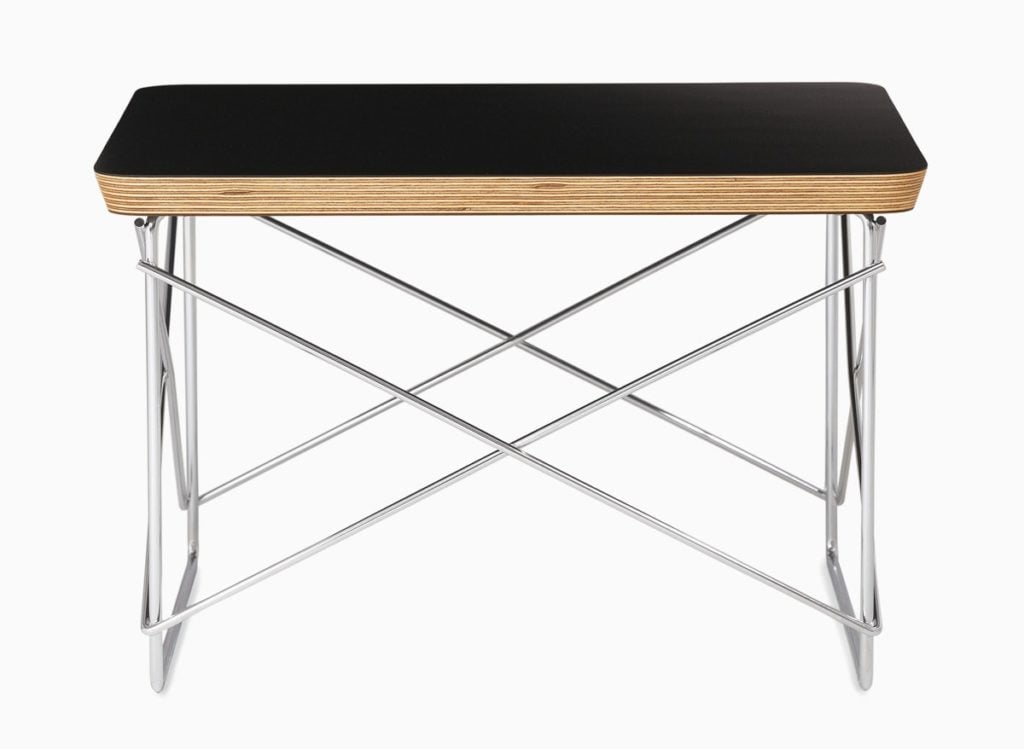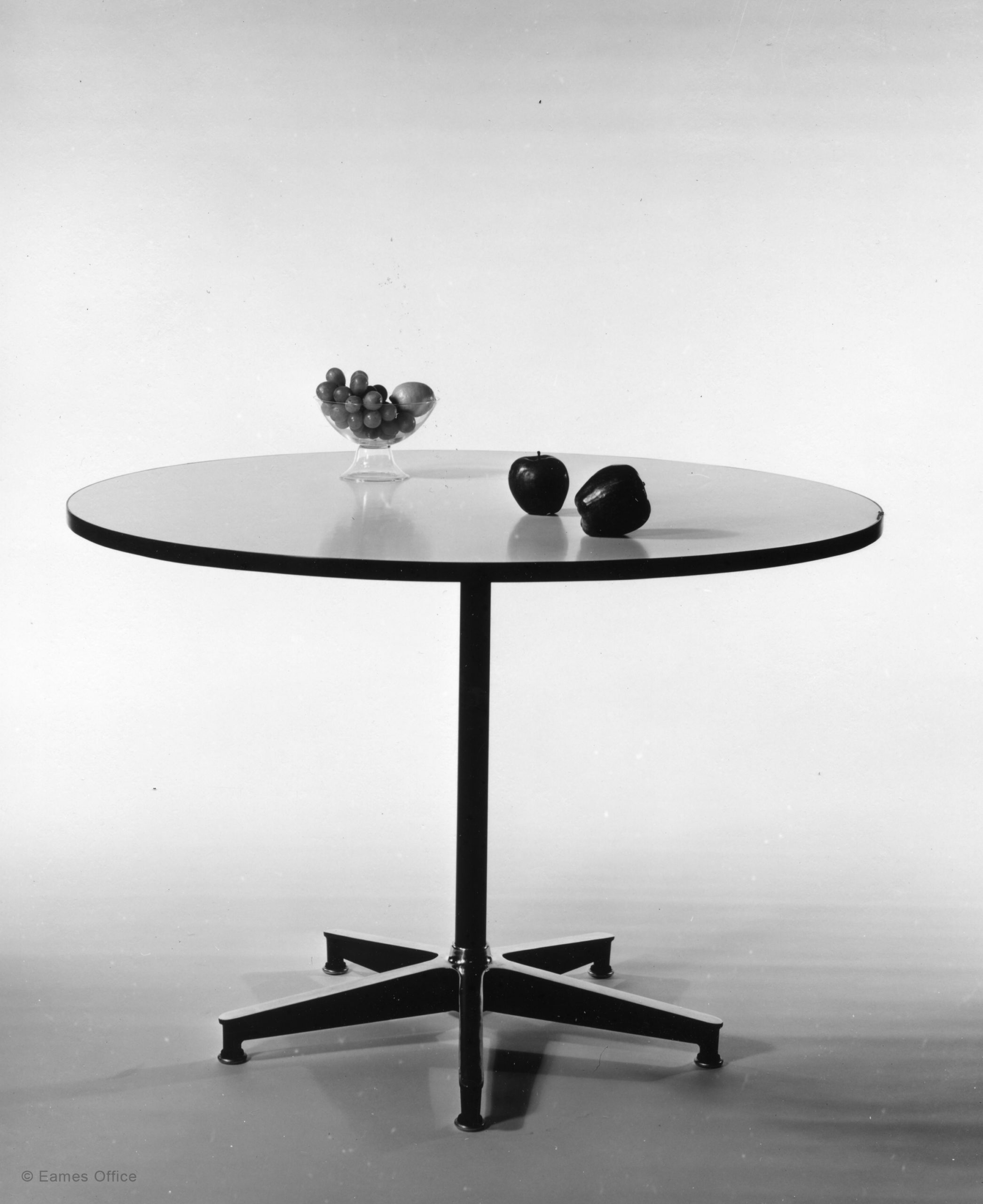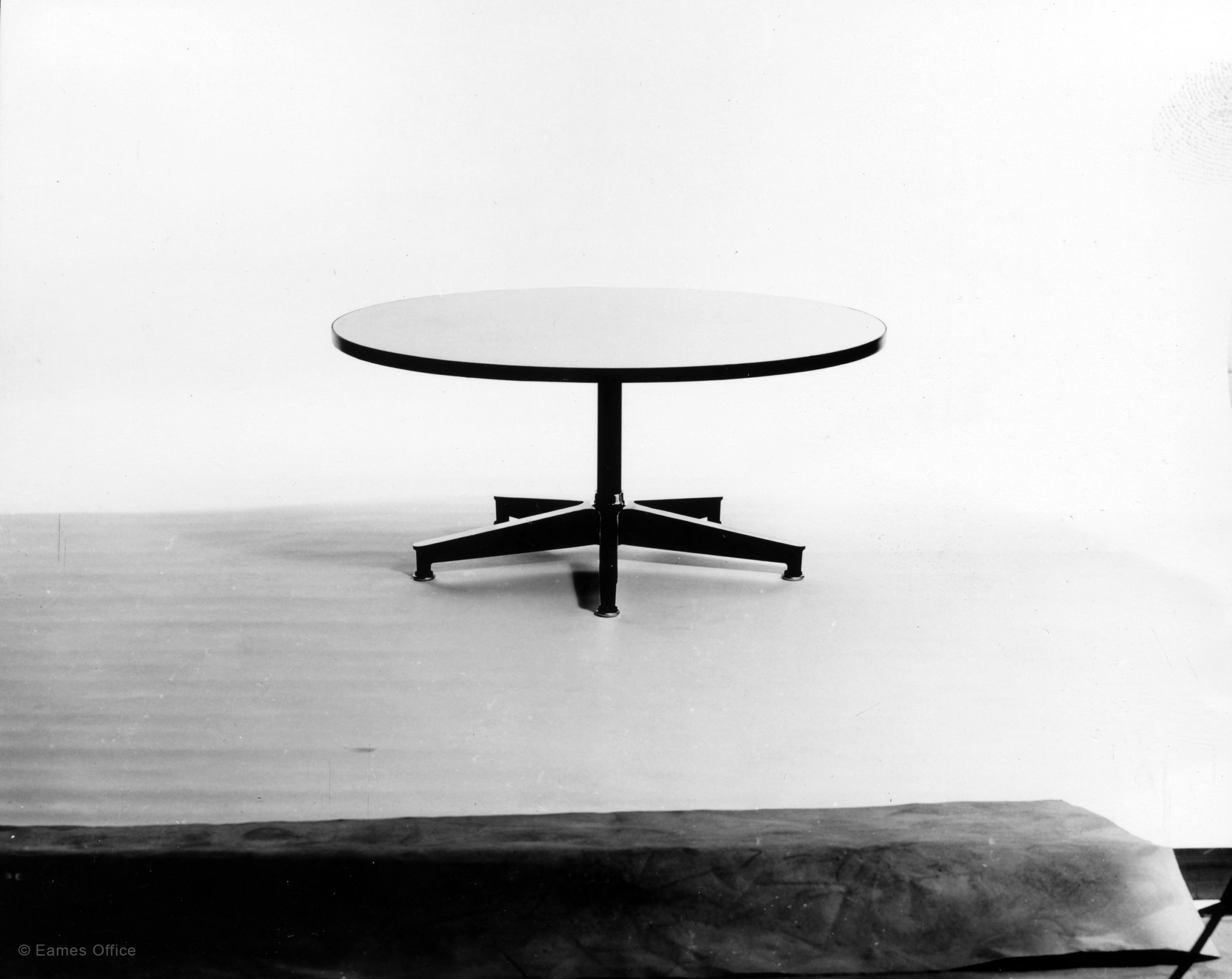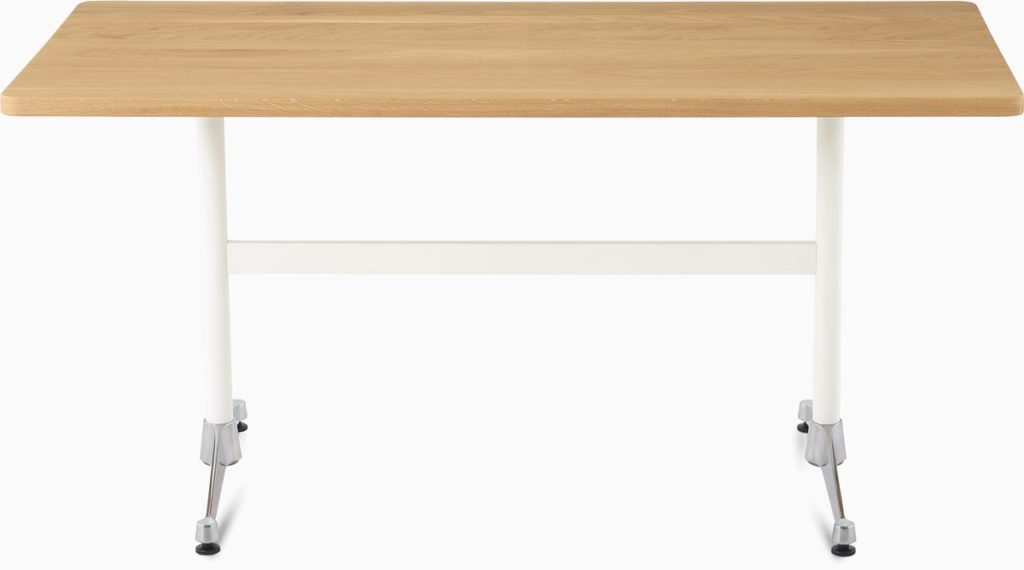Additional Information
The advantage of pedestal bases is more room for legs, both human and chair legs! To provide stability, the contract bases have what we refer to as blades. Introduced to the public in 1953, this base had four blades of unadorned slab steel, with carefully shaped cast aluminum footrests affixed to each blade. It was always sold with casters, and at the top of the rolled steel tube was a tilt-swivel mechanism. About a year later, Charles and Ray came out with a more shaped base in two versions: The five-blade version was for tables, and the four-blade version was for shell chairs.
By 1956, they developed what we now call “The Eames Contract Base,” with four blades. The early five and four-blade bases were repurposed and used from 1956 to the present as the bases for the Eames 670 Lounge Chair and 671 Ottoman. Starting in 1958, when the Eames Aluminum Group was introduced, the Eames Contract Base was used on both the seating and the tables of the Eames Aluminum Group.
To replace the earliest contract base, the one with cast aluminum footrests, the Eames Office developed an Eames Contract Base with the exact proportions of the original Contract Base but with much greater mass. This was suitable for tables with heavy marble tops (an option introduced in 1958) and also for contract market shell chairs with their heavy tilt swivel options.
The 1956 Eames Contract Base has evolved in the 21st century to comply with the newest safety rules and regulations concerning the contract furniture market.
Explore Similar Works
Related Products
Browse a curated selection of Eames Office products we think you’ll love

Eames Wire Base Low Table
$245.00


